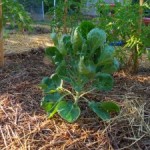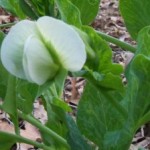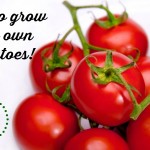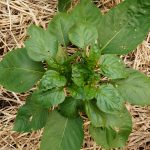By Tiffany Selvey, Master Gardener and mama of 1
We’re coming to the end of another (hopefully) successful gardening season. After the heat and drought this summer, if you managed to keep anything alive pat yourself on the back.
The first expected frost date for our area is October 31st. That doesn’t mean that frost isn’t possible before, or that we will get frost on that day, it just means that it’s the average first frost date. This is the guideline gardeners use to determine when to clean up the garden, remove frost-sensitive plants, or prepare season extending procedures. Gardeners everywhere run out to harvest as much as possible before the first frost hits. If you look carefully, you can watch us shiver as we remove green tomatoes and tiny peppers.
We have had a few cool nights, but thankfully most of us missed that first frost that was in the forecast. It is, however, inevitable. With frost looming on the horizon, what needs to be done in the garden?
- If you want to keep your frost-sensitive blooms and veggies around as long as possible, be prepared. We typically get a few light frosts through the month of November, so keep some old sheets around for those cold nights. Watch the forecasts carefully and, when there’s a chance of frost, cover your sensitive plants. Burlap and paper will also work. But don’t use any kind of plastic because this won’t protect from frost. I like to secure my fabric to the plants with clothes pins to make sure the wind doesn’t blow away my protection.
- There is still time to grow frost-tolerant plants. Kale, chives, cabbage, and Brussels sprouts will survive the first light frosts. In fact, I’ve grown kale and chives all through the winter with no cold damage at all. They are very hardy. Mums are my favorite frost-tolerant blooms and they’re available at all the garden centers right now.
- This is the perfect time to prepare for next year. “Lasagna gardening”- which means layering organic materials – is the best way to prepare next spring’s garden spot. Just lay down layers of cardboard, newspaper, or paper bags on your desired garden space, then add layers of organic material. Straw, leaves, and grass clippings are perfect. Over the winter, these materials will breakdown, the paper products will suffocate weeds while the paper and mulch feed the soil. By Spring you will have moist, well-fed soil in which to plant! (To see this process in action, come to my FREE gardening class! Details here.)
Year-round gardening is possible in Northwest Arkansas with season extenders like low rows, hoop houses, and greenhouses. I admire those who work hard all year long to provide food. This year I’ll be taking advantage of the winter season to rest. My cold weather crops will be allowed to live out their natural lives and we’ll enjoy them as long as they hold out. After that, I’ll enjoy the shorter days and rest up for next spring.
Tiffany Se lvey is a Master Gardener who writes about her passion for growing, cooking, and living naturally at www.20-by-20.com. When she’s not elbow deep in soil, she enjoys raising a very active son, laughing with her husband, and wrangling their five pets. Click HERE to read more in our Gardening Category.
lvey is a Master Gardener who writes about her passion for growing, cooking, and living naturally at www.20-by-20.com. When she’s not elbow deep in soil, she enjoys raising a very active son, laughing with her husband, and wrangling their five pets. Click HERE to read more in our Gardening Category.





